PHÂN TÍCH CHI PHÍ-HIỆU QUẢ CỦA CÁC THUỐC CHỐNG ĐÔNG THẾ HỆ MỚI TRONG ĐIỀU TRỊ THUYÊN TẮC HUYẾT KHỐI TĨNH MẠCH VÀ PHÒNG NGỪA BIẾN CỐ TÁI PHÁT TẠI VIỆT NAM
Nội dung chính của bài viết
Tóm tắt
Đặt vấn đề: Thuyên tắc huyết khối tĩnh mạch (Venous thromboembolism-VTE) là nguyên nhân chính gây tử vong trong bệnh lý tim mạch, chỉ sau nhồi máu cơ tim cấp và đột quỵ. Hiện nay, nhóm thuốc chống đông đường uống thế hệ mới (Novel oral anticoagulant-NOAC) đã được đưa vào sử dụng trong điều trị VTE và phòng ngừa biến cố tái phát. Tuy nhiên, giá thành của thuốc cao gây ra khó khăn cho người bệnh trong việc tiếp cận điều trị. Phương pháp nghiên cứu: Phân tích chi phí-hiệu quả sử dụng phương pháp mô hình hóa bằng mô hình Markov với dữ liệu thu thập từ các nghiên cứu (NC) lâm sàng, tổng quan y văn và tham vấn ý kiến chuyên gia dựa trên quan điểm của cơ quan chi trả bảo hiểm y tế (BHYT). Kết quả: NC so sánh hiệu quả (QALY, LYG) và chi phí điều trị (CPĐT) của apixaban, rivaroxaban, dabigatran, LMWH/VKA và heparin/VKA trong điều trị VTE. Kết quả cho thấy apixaban vượt trội hơn so với rivaroxaban và dabigatran khi mang lại hiệu quả cao hơn, đồng thời tiết kiệm CPĐT lần lượt 1,93 và 2,32 triệu VND; rivaroxaban vượt trội hơn so với dabigatran. Bên cạnh đó, với ngưỡng chi trả tại Việt Nam (305,7 triệu VND/QALY), apixaban đạt chi phí-hiệu quả (CP-HQ) so với LMWH/VKA và heparin/VKA; rivaroxaban không đạt CP-HQ và dabigatran bị vượt trội so với LMWH/VKA và heparin/VKA. Kết luận: Trên quan điểm của cơ quan chi trả BHYT, so với ngưỡng chi trả (305,7 triệu VND/QALY), apixaban đạt CP-HQ so với VKA và nổi trội hơn so với rivaroxaban và dabigatran trong điều trị thuyên tắc hệ thống tại Việt Nam.
Chi tiết bài viết
Từ khóa
thuốc chống đông đường uống thế hệ mới, thuyên tắc huyết khối tĩnh mạch, NOAC, VTE, chi phí-hiệu quả
Tài liệu tham khảo
2. Lisa A. de Jong, Evgeni Dvortsin, Kristel J. Janssen và Maarten J. Postma (2017), "Cost-effectiveness analysis for apixaban in the acute treatment and prevention of venous thromboembolism in the Netherlands", Clinical therapeutics. 39(2), tr. 288-302.
3. Isabel Elías và các cộng sự. (2016), "Cost-effectiveness analysis of apixaban compared to low-molecular-weight heparins and vitamin k antagonists for treatment and secondary prevention of venous thromboembolism", Farmacia Hospitalaria. 40(3), tr. 187-208.
4. John A. Heit, Frederick A. Spencer và Richard H. White (2016), "The epidemiology of venous thromboembolism", Journal of thrombosis and thrombolysis. 41, tr. 3-14.
5. Tereza Lanitis và các cộng sự. (2016), "Cost-effectiveness of apixaban versus other oral anticoagulants for the initial treatment of venous thromboembolism and prevention of recurrence", Clinical therapeutics. 38(3), tr. 478-493.
6. Tereza Lanitis và các cộng sự. (2017), "Cost-effectiveness of apixaban versus low molecular weight heparin/vitamin k antagonist for the treatment of venous thromboembolism and the prevention of recurrences", BMC Health Services Research. 17(1), tr. 1-14.
7. Charles E. Mahan và các cộng sự. (2011), "Deep-vein thrombosis: a United States cost model for a preventable and costly adverse event", Thrombosis and haemostasis. 106(09), tr. 405-415.
8. My Hanh Bui và các cộng sự. (2020), "Economic burden of venous thromboembolism in surgical patients: A propensity score analysis from the national claims database in Vietnam". 15(4), tr. e0231411.
9. Maria M Fernandez và các cộng sự. (2015), "Review of the cost of venous thromboembolism", tr. 451-462.


